By February 2016, the U.S. Department of Energy requires that external power supplies are compliant to Level VI energy efficiency requirements.
The global regulatory environment for external power supply energy efficiency has rapidly evolved over the past decade since the California Energy Commission (CEC) implemented the first mandatory standard in 2004. Now, external power supplies sold in the U.S. must meet updated and expanded U.S. Department of Energy (DoE) Level VI Energy Efficiency requirements by February 10, 2016.
The new DoE standard mandates more stringent energy efficiency levels for a greater number of external power supply types. The DoE estimates that these requirements will save consumers up to $3.8 billion and cut emissions by nearly 47 million metric tons of carbon dioxide over 30 years, equivalent to the annual electricity use of 6.5 million homes.
History
In the early 1990s, it was estimated that there were more than one billion external power supplies active in the U.S. alone. The efficiency of these power supplies could be as low as 50% and still draw power when the application was turned off or unconnected (a “no-load” condition). Experts calculated that without efforts to increase efficiencies and reduce no-load power consumption, external power supplies would account for around 30% of total energy consumption in less than 20 years.
Global Requirements
While many countries still have voluntary programs harmonized to the international efficiency marking protocol system first established by the ENERGY STAR Program, the U.S., Canada, and European Union now have mandatory energy efficiency regulations in place for external power supplies.
Today, Level V will meet or exceed the requirements of any governing body around the globe. Power supply manufacturers indicate compliance by placing a Roman Numeral V on the power supply label as specified by the International Efficiency Marking Protocol for External Power Supplies Version 3.0, updated in September 2013.
Performance Specs
The internationally approved test method for determining efficiency has been published by the IEC as AS/NZS 4665 Part 1 and Part 2. The approach taken to establish an efficiency level is to measure the input and output power at 4 defined points: 25%, 50%, 75% and 100% of rated power output. Data for all 4 points are separately reported as well as an arithmetic average active efficiency across all 4 points.
Level VI
Power supply manufactures are already preparing for the coming transition in February 2016 to the more stringent Level VI standards. Along with tightened regulations for existing adapters, the new standard expands the range of products that fall under the standard to now include:
- Multiple-voltage external power supplies
- Products with power levels >250 watts
Direct Vs Indirect Operation
The new standard also defines power supplies as direct or indirect operation products. A direct operation product functions without the assistance of a battery. An indirect operation supply is not a battery charger but cannot operate the end product without the assistance of a battery. The new standard only applies to direct operation external power supplies. Indirect operation models will still be governed by the limits as defined by EISA2007.
Exemptions
The Level VI mandate also includes these exemptions:
- A device that requires Federal Food and Drug Administration AS/NZS 4665 listing and approval as a medical device in accordance with section 360c of title 21
OR
- A direct operation, AC-DC supply with output voltage less than 3 volts and output current ≥1,000 milliamps that charges the battery of a product that is fully or primarily motor-operated.
Legacy Products
The DoE Level VI requirement date is February 10, 2016, but it is important to note that compliance with the new standard will be regulated from the date of manufacture, so legacy products can still be shipped as long as the manufacture date is prior to the transition date. Labeling requirements will be required to meet the same International Efficiency Marking Protocol for External Power Supplies Version 3.0 as the current Level V standard.
Looking Forward
Globally, it is expected that other nations will soon follow suit with this standard. In the EU, the mandatory European Ecodesign Directive for external power supplies is currently undergoing revision discussions and it is expected to harmonize with most, if not all, of the U.S. standards. Countries with existing efficiency regulations in line with the U.S., including Canada and Australia, are expected to harmonize with the new standard as well.
MET Labs is geared up to provide independent test reports to verify your compliance with the new Level VI standard for external power supplies. Contact us for a free quote today.
In addition to testing for the Department of Energy, MET is your one-stop-shop for energy efficiency testing and certification for ENERGY STAR, EU Ecodesign Directive, Natural Resources Canada, and the California Energy Commission.
